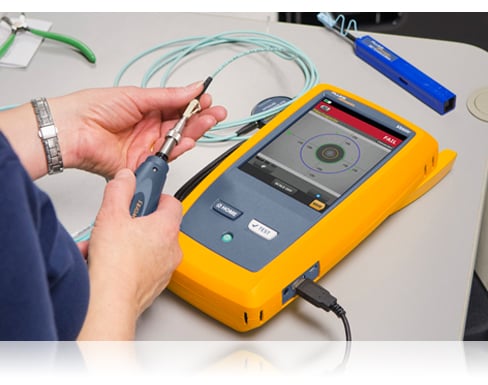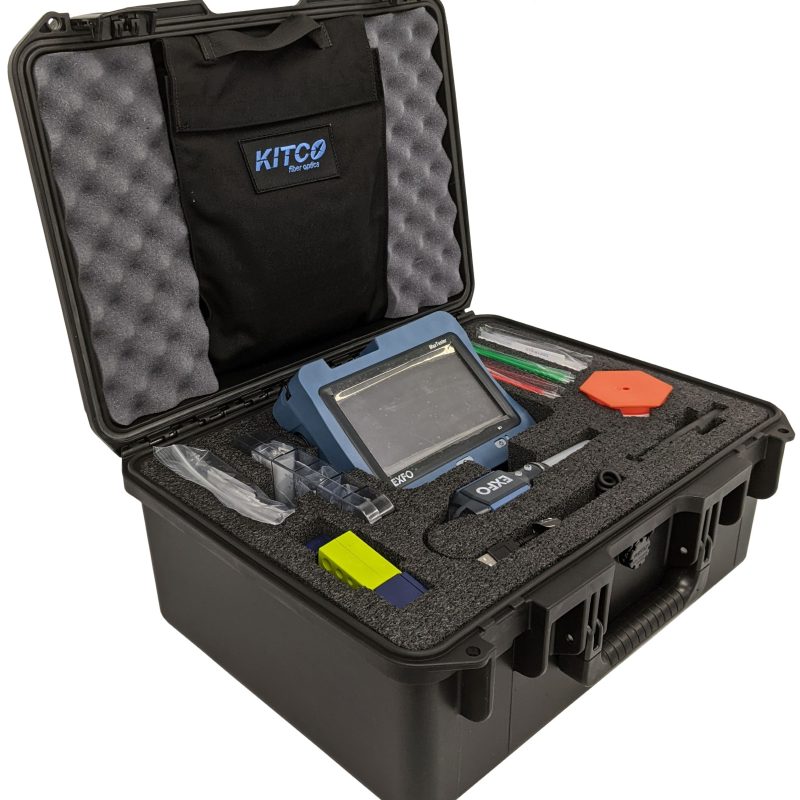Recognizing Exactly How an Optical Measurement System Enhances Accuracy in Industrial Applications
Optical measurement systems play a necessary role in enhancing accuracy throughout numerous commercial applications. By leveraging sophisticated technologies such as laser interferometry and 3D imaging sensing units, these systems offer high-resolution, non-contact dimensions. This capability reduces the threat of damaging delicate elements while making sure accuracy. Nevertheless, the impact of these systems extends past simple measurements. Discovering their advantages, applications, and future fads reveals a complicated landscape of development and difficulties that merits more detailed exam.
The Essentials of Optical Measurement Systems
Optical measurement systems work as vital tools in numerous industrial applications, supplying exact data collection and evaluation. These systems utilize light as a key ways of measurement, leveraging optical concepts to assess measurements, settings, and surface area qualities of objects. They integrate components such as lasers, cams, and sensing units, which work together to catch high-resolution images and data.
The modern technology allows non-contact dimensions, lessening the risk of damaging sensitive parts. Optical measurement systems are functional, discovering utility in quality control, setting up verification, and dimensional evaluation across different fields. They are especially reliable in environments where standard measurement techniques might drop short, such as determining complicated geometries or observing fast activities.
As sectors remain to progress, the assimilation of optical measurement systems will certainly continue to be vital for guaranteeing precision and efficiency, inevitably improving item quality and functional performance in various producing processes.
Trick Technologies Behind Optical Measurement
Trick modern technologies such as laser interferometry techniques and 3D imaging sensors play a crucial duty in the effectiveness of optical measurement systems (robotic vision). These technologies make it possible for exact measurements and in-depth analysis in various commercial applications. Comprehending their performances is crucial for harnessing the full potential of optical measurement systems
Laser Interferometry Techniques
Countless laser interferometry methods have reinvented the field of optical measurement, using unmatched accuracy and precision in different commercial applications. These methods use the interference of coherent light waves to measure range, variation, and surface area abnormalities with nanometer-level accuracy. Typical techniques include Michelson interferometry, which splits a beam and evaluates stage changes, and Fabry-Pérot interferometry, understood for its high resolution in measuring small adjustments. In addition, laser Doppler interferometry uses frequency changes to analyze speed, making it invaluable in vibrant measurements. The adaptability of these methods permits their combination into diverse manufacturing procedures, boosting high quality control and making sure adherence to stringent tolerances. Consequently, laser interferometry remains to play an essential duty ahead of time industrial measurement criteria.
3D Imaging Sensors
Developments in measurement technology have actually led to the advancement of 3D imaging sensing units, which play a substantial function in optical measurement systems. These sensors catch three-dimensional data with numerous techniques such as triangulation, time-of-flight, and structured light. By properly reconstructing the form and dimensions of things, 3D imaging sensors improve the accuracy of dimensions in industrial applications. They give real-time feedback, facilitating top quality control and making certain that parts fulfill strict requirements. Furthermore, their capacity to operate in difficult environments, such as differing lights conditions, makes them important in making processes. As industries significantly embrace automation, the combination of 3D imaging sensors into optical measurement systems is expected to drive additional enhancements in effectiveness and precision.
Benefits of Optical Measurement in Sector
Although traditional measurement methods have long been the standard in industrial setups, optical measurement systems supply considerable advantages that enhance accuracy and efficiency. These systems utilize light to catch data, resulting in high-resolution dimensions that are often unattainable with conventional strategies. The non-contact nature of optical dimensions minimizes the danger of damaging delicate elements throughout the evaluation process. Furthermore, the speed of optical measurements enables for fast data purchase, assisting in timely decision-making in fast-paced industrial environments.
Optical systems are adaptable, with the ability of measuring various materials and shapes without the need for considerable recalibration. This convenience adds to improved process and efficiency. The automation potential of optical measurement systems minimizes human error, ensuring constant top quality control. On the whole, the combination of optical measurement modern technology stands for my blog a dynamic change towards enhanced precision and dependability in commercial procedures, eventually leading to improved item top quality and operational performance.
Applications of Optical Measurement Systems

Optical measurement systems play an essential role in boosting manufacturing procedure optimization by offering precise information for decision-making. These systems guarantee quality assurance assurance with real-time monitoring and analysis of production metrics. As markets progressively take on these innovations, their effect on effectiveness and item reliability comes to be apparent.
Production Process Optimization
Enhancing manufacturing procedure efficiency is significantly reliant on the assimilation of optical measurement systems. These systems offer real-time information on numerous specifications, enabling suppliers to examine procedures with a high degree of accuracy. By making it possible for exact dimensions of measurements, surface area characteristics, and product residential properties, optical measurement systems assist in the recognition of ineffectiveness and traffic jams in manufacturing lines. The instant responses from these systems encourages engineers to make informed decisions, causing enhanced machining, setting up, and finishing processes. Furthermore, the capability to keep an eye on problems continually allows for adaptive adjustments, lessening downtime and waste. As markets go for greater performance and lowered operational expenses, optical measurement systems emerge as vital tools for boosting manufacturing process optimization.

Quality Assurance Guarantee
The assimilation of optical measurement systems substantially effects high quality control assurance in industrial setups. These systems supply precise and non-destructive dimensions, enabling makers to discover flaws and discrepancies early in the manufacturing process. By making use of advanced imaging methods, such as laser triangulation and interferometry, optical measurement systems assure that components meet rigorous specifications. This helps with real-time monitoring, reducing waste and lessening the threat of defective items getting to the market. Additionally, the information click now accumulated can be evaluated to fine-tune manufacturing processes even more, bring about constant renovation. Ultimately, the adoption of optical measurement systems improves integrity and uniformity in quality assurance, promoting higher self-confidence amongst stakeholders and customers alike in the end products provided.
Instance Researches: Successful Executions
Countless industries have effectively integrated optical measurement systems to improve their functional efficiency and item top quality. For example, in the automotive sector, a popular supplier adopted a laser triangulation system to keep track of the alignment of car elements. This implementation greatly reduced setting up mistakes, causing enhanced safety and lowered expenses.
In the aerospace industry, a leading airplane maker utilized optical width for precision measurements of generator blades, attaining a reduction in producing tolerances and far better efficiency standards.
A consumer electronics company applied optical measurement innovation during the manufacturing of mobile phone screens, resulting in boosted top quality control and a reduction in defective items.
These study illustrate just how optical measurement systems not only boost accuracy however also add to total operational performance, showing their value throughout various fields. By attending to particular demands, these systems have proven to be indispensable devices in modern-day industrial applications.
Obstacles and Limitations of Optical Measurement
While optical measurement systems offer considerable benefits in various industrial applications, they are not without their challenges and restrictions. One significant issue is level of sensitivity to ecological conditions, such as temperature variations, humidity, and dust, which can adversely influence measurement precision. Additionally, optical systems frequently need specific alignment and calibration, making them vulnerable to human mistake throughout arrangement and operation. One more restriction is the possibility for disturbance from ambient light, which can misshape measurements and Visit This Link necessitate complicated filtering system strategies. In addition, certain products and surface areas might offer troubles, as reflective or clear qualities can bring about irregular readings. The cost of high-grade optical parts and systems can additionally be an obstacle for some sectors, restricting extensive fostering. Lastly, specialized training is typically required for workers to effectively operate and maintain these systems, including in the overall complexity and operational challenges.
Future Trends in Optical Measurement Modern Technology
As advancements in modern technology continue to shape commercial procedures, the future of optical measurement systems is poised for significant advancement. Emerging trends show a shift in the direction of enhanced integration of expert system and artificial intelligence, enabling systems to analyze information in real-time, determine patterns, and improve decision-making procedures. In addition, the development of miniaturized sensing units and progressed optics is expected to result in more portable and functional measurement services, making them accessible for a broader variety of applications.
In addition, the incorporation of 3D imaging and high-resolution capacities will enable unmatched precision in measurements, which is essential for markets such as aerospace and vehicle. The press for automation and Industry 4.0 will likewise drive the need for optical measurement systems that can conveniently interface with various other modern technologies. As these trends unfold, optical measurement systems will likely become essential to accomplishing higher performance and accuracy throughout numerous commercial fields.

Often Asked Questions
How Do Optical Measurement Systems Compare to Conventional Measurement Methods?
Optical measurement systems offer better precision and speed contrasted to typical techniques - optical measurement system. They decrease human mistake, improve data collection performance, and supply real-time results, making them significantly liked in various commercial applications for accurate measurements
What Industries Advantage one of the most From Optical Measurement Systems?
Optical measurement systems greatly profit industries such as aerospace, auto, and electronics. Their capacity to offer high-precision measurements boosts quality control, lowers manufacturing errors, and improves general efficiency, making them important in affordable manufacturing atmospheres.
Can Optical Measurement Systems Be Customized for Certain Applications?
Optical measurement systems can undoubtedly be tailored for particular applications. By readjusting parameters such as wavelength, resolution, and calibration methods, industries can tailor these systems to fulfill unique precision and precision needs efficiently.
What Is the Upkeep Demand for Optical Measurement Systems?
The upkeep requirements for optical measurement systems normally consist of regular calibration, cleaning of optical components, and software program updates. Following these practices assurances accuracy, integrity, and long life of the measurement equipment in various applications.
How Do Environmental Aspects Affect Optical Measurement Precision?
Ecological variables, such as temperature fluctuations, humidity, and dust, greatly effect optical measurement accuracy. These aspects can misshape light courses and hinder sensing unit analyses, inevitably compromising the dependability and accuracy of dimensions in industrial settings.